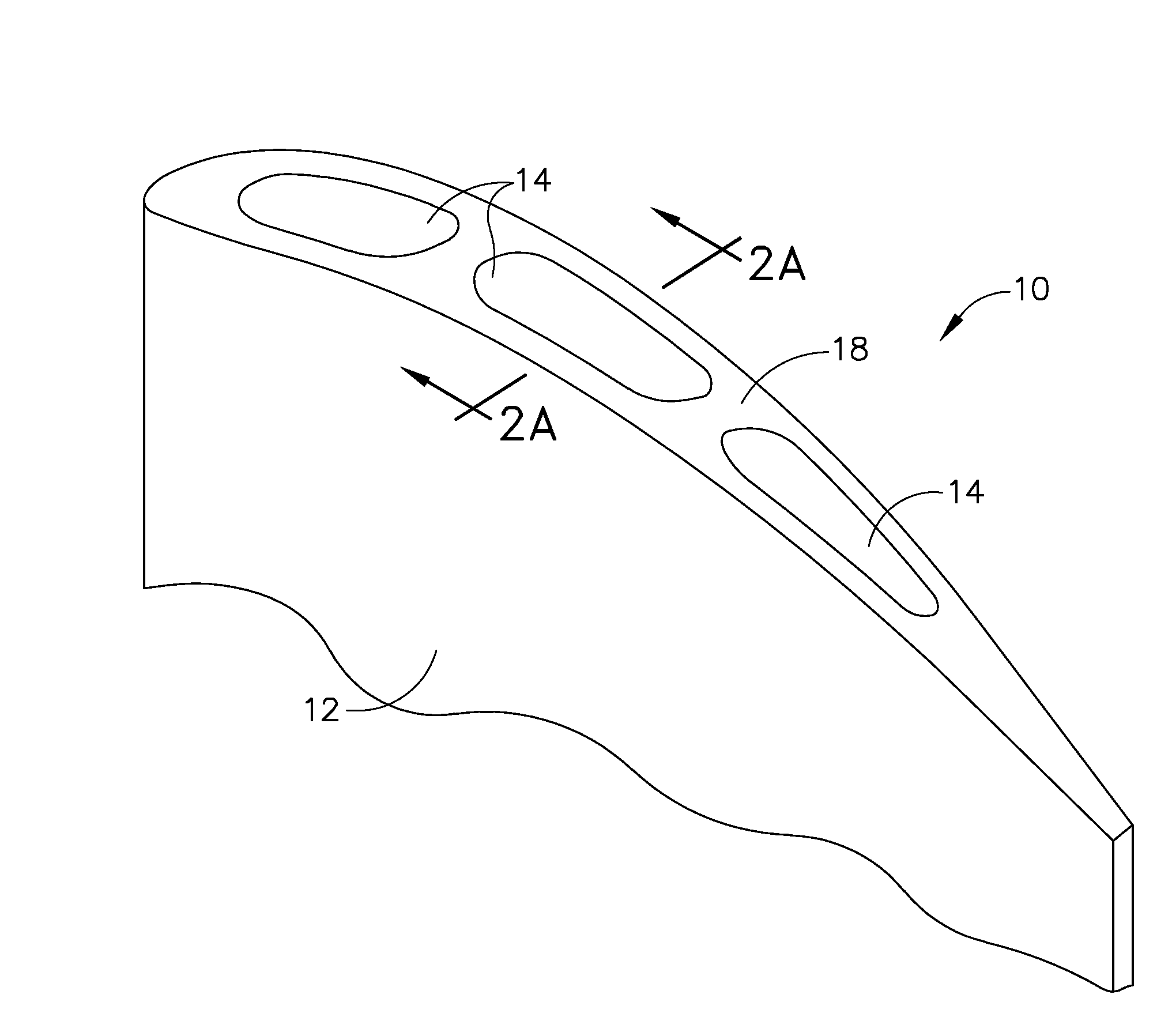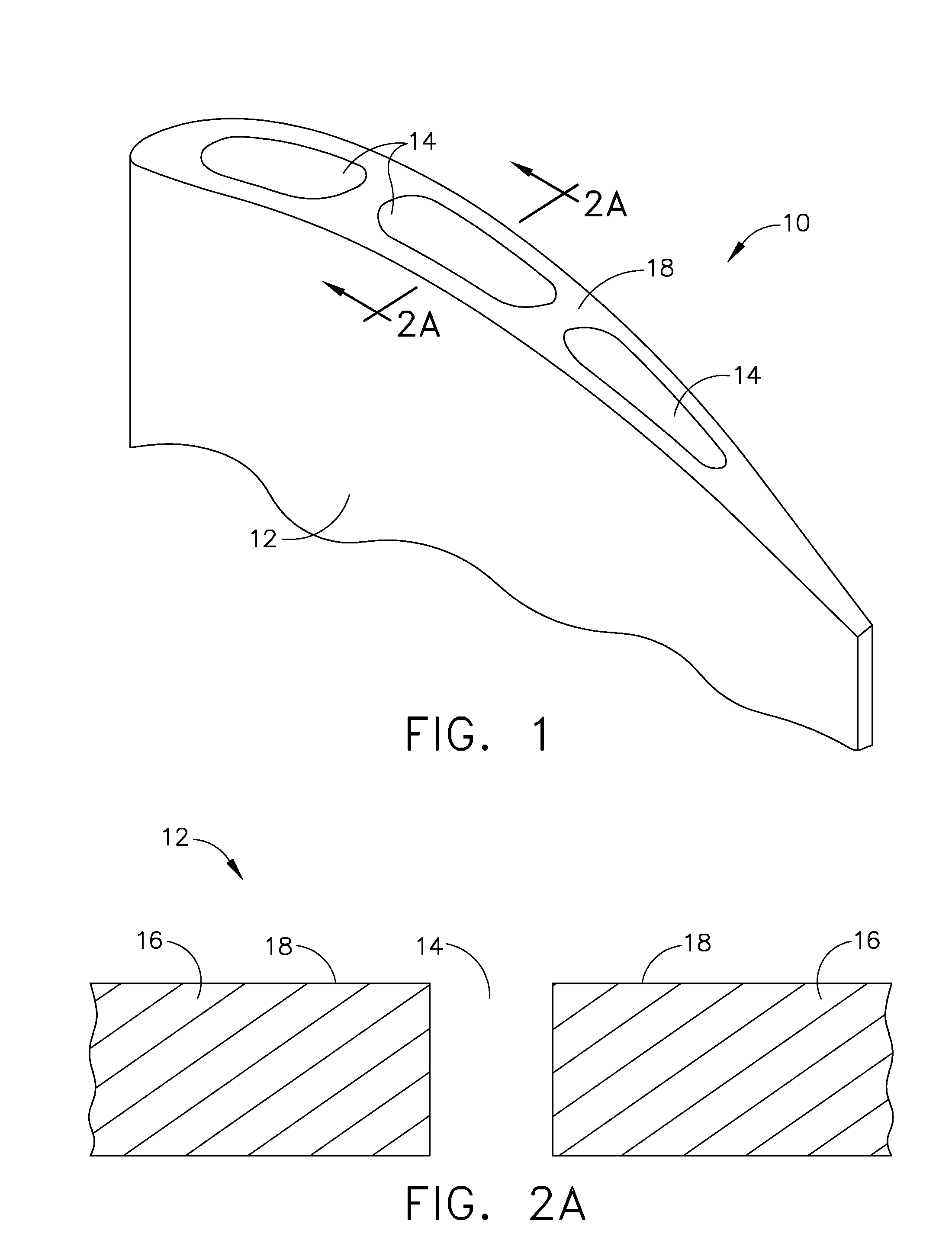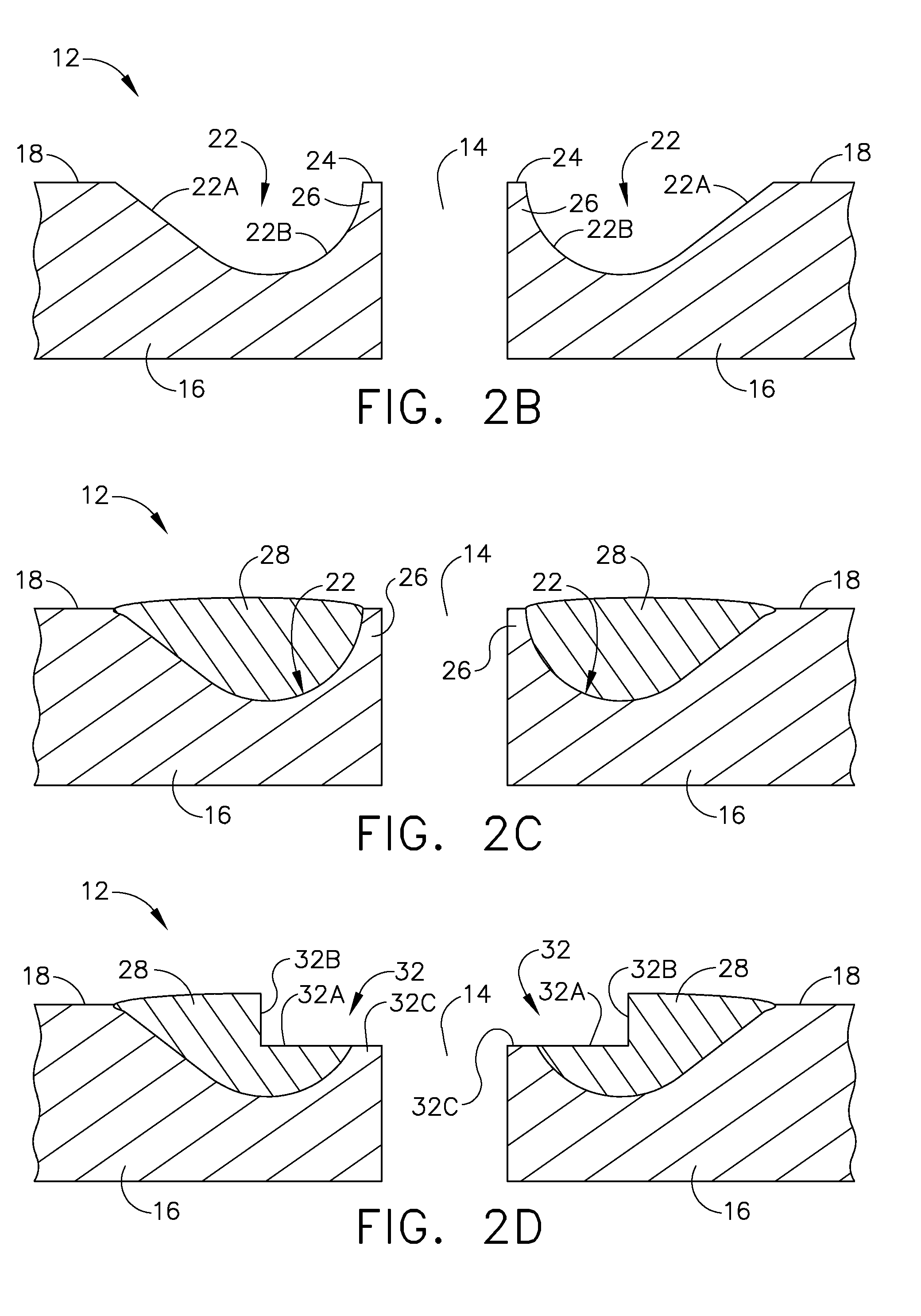Process of closing an opening in a component
- Summary
- Abstract
- Description
- Claims
- Application Information
AI Technical Summary
Benefits of technology
Problems solved by technology
Method used
Image
Examples
Embodiment Construction
[0014]FIG. 1 represents a perspective view of the tip region 12 of a component 10, such as a bucket, nozzle, or other hot gas path component of a gas turbine. As such, the component 10 is preferably a directionally-solidified or single-crystal casting formed of a high-temperature material, notable examples of which include nickel-base superalloys such as René N4, René N5 , René 108, GTD-111®, GTD-444° and IN-738. René N4, René N5 , René 108, GTD-111® and GTD-444® are gamma prime-strengthened nickel-based superalloys whose compositions are reported in various literature, including U.S. Pat. Nos. 4,810,467, 5,154,884, 5,399,313, 6,074,602, 6,416,596, 6,428,637, and others. The nominal composition of IN-738 is reported as, by weight, about 16% chromium, 8.5% cobalt, 1.75% molybdenum, 2.6% tungsten, 1.75% tantalum, 0.9% niobium, 3.4% aluminum, 3.4% titanium, 0.10% zirconium, 0.01% boron, 0.17% carbon, the balance nickel and impurities. Notably, each ofthese nickel-base materials nominal...
PUM
| Property | Measurement | Unit |
|---|---|---|
| Fraction | aaaaa | aaaaa |
| Fraction | aaaaa | aaaaa |
| Fraction | aaaaa | aaaaa |
Abstract
Description
Claims
Application Information
 Login to View More
Login to View More - R&D
- Intellectual Property
- Life Sciences
- Materials
- Tech Scout
- Unparalleled Data Quality
- Higher Quality Content
- 60% Fewer Hallucinations
Browse by: Latest US Patents, China's latest patents, Technical Efficacy Thesaurus, Application Domain, Technology Topic, Popular Technical Reports.
© 2025 PatSnap. All rights reserved.Legal|Privacy policy|Modern Slavery Act Transparency Statement|Sitemap|About US| Contact US: help@patsnap.com



